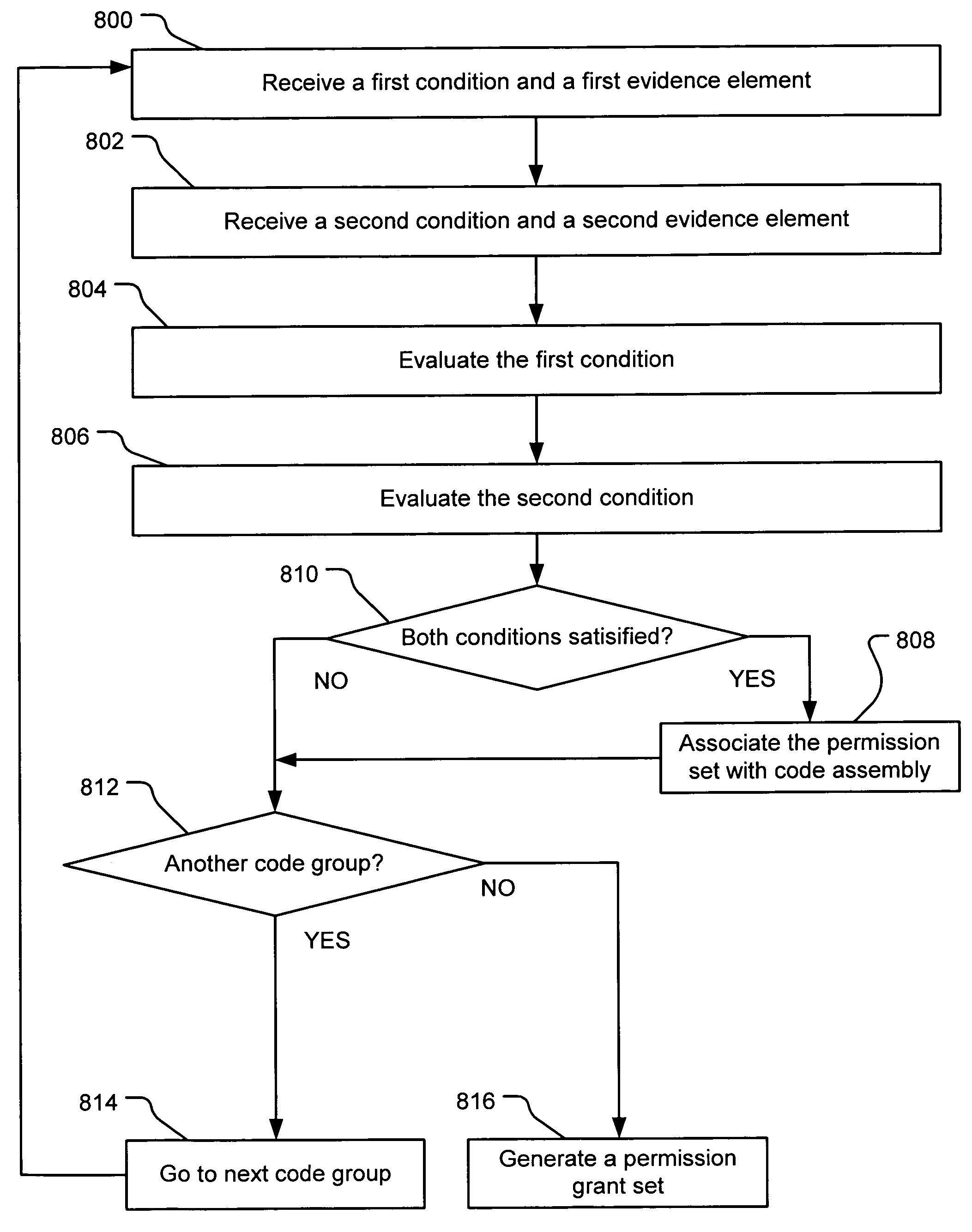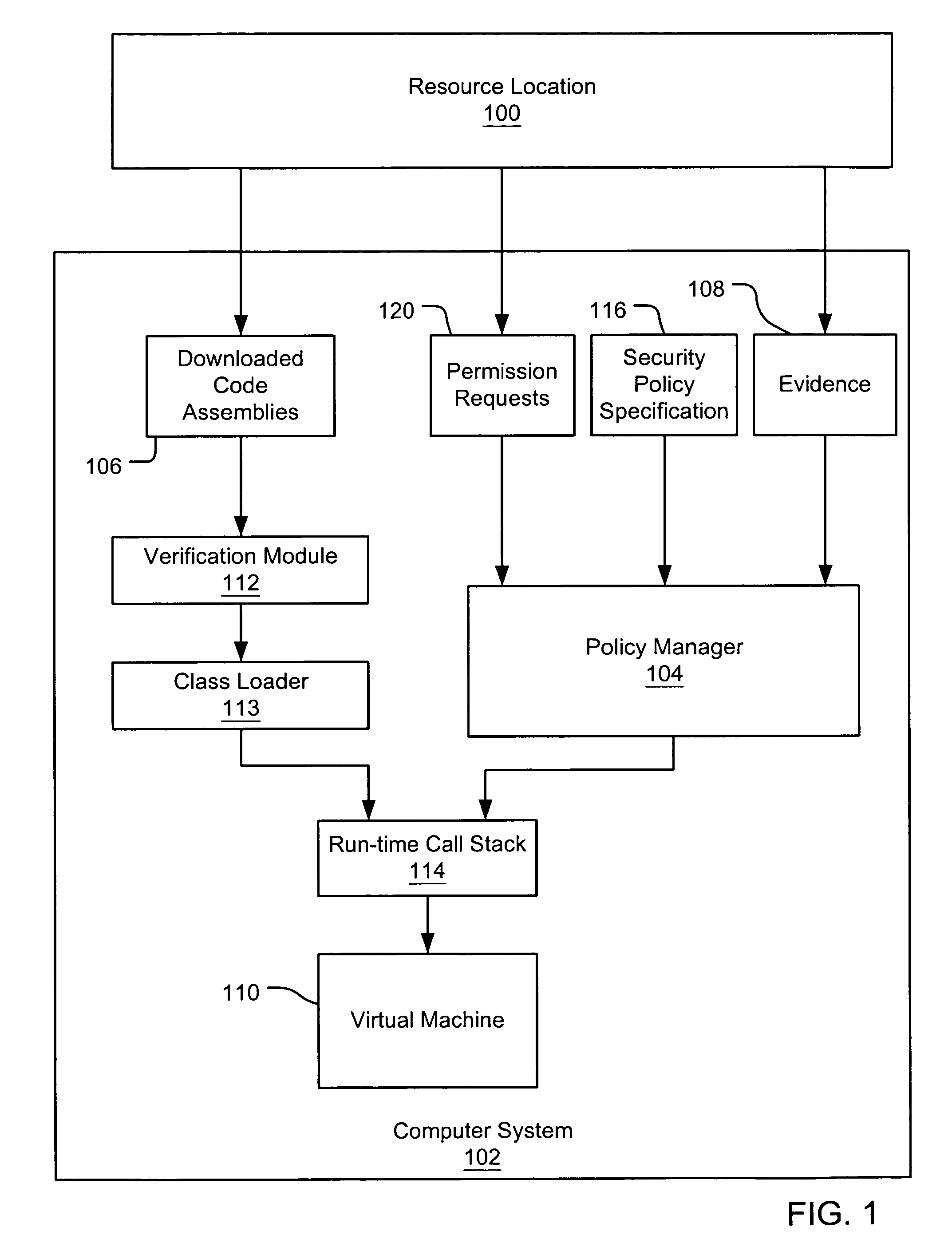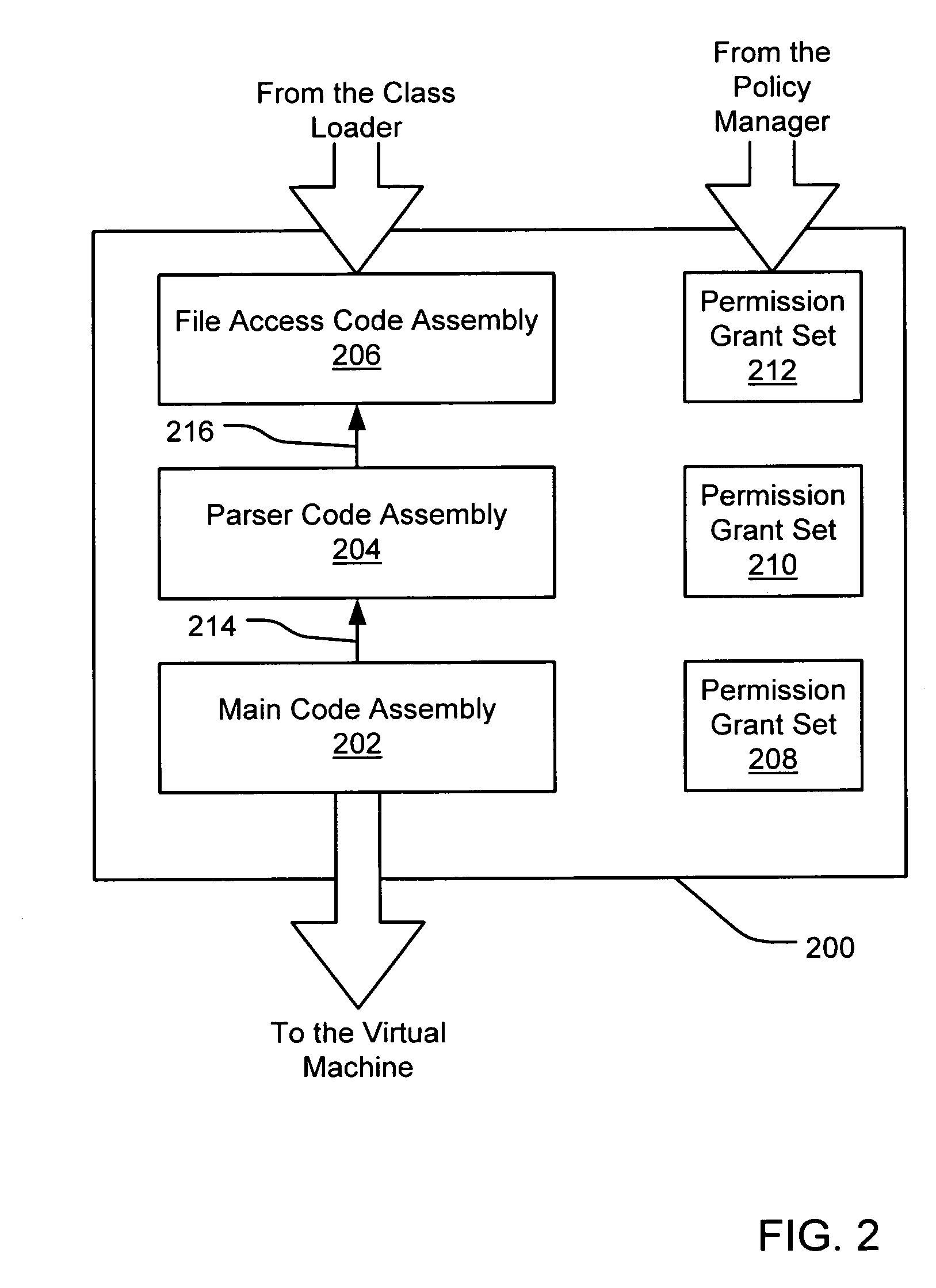Evaluating initially untrusted evidence in an evidence-based security policy manager
a security policy and evidence-based technology, applied in the field of computer security, can solve problems such as inflexible and cumbersome control of user's system access, inherent security risks, and and achieve the effects of reducing the number of users, and increasing the difficulty of unauthorized access to user's system
- Summary
- Abstract
- Description
- Claims
- Application Information
AI Technical Summary
Benefits of technology
Problems solved by technology
Method used
Image
Examples
Embodiment Construction
[0024]An embodiment of the present invention provides an evidence-based policy manager that associates a permission set with a code assembly based on evidence characterized by different levels of trust (e.g., implicitly trusted evidence and initially untrusted evidence). “Initially untrusted” evidence may include evidence that is not trusted at the time it is received, although it may eventually be assigned a level of trust, depending on one or more conditions. Generally, a code assembly is a unit of packaged code, such as a .EXE file or a .DLL file. The policy manager can execute in a computer system (e.g., a Web client or a networked workstation) in combination with the verification module and class loader of the run-time environment; however, a policy manager can also execute outside of a run-time environment. The permission grant set generated for a code assembly is applied in the run-time call stack to help the system determine whether a given system operation by the code assem...
PUM
 Login to View More
Login to View More Abstract
Description
Claims
Application Information
 Login to View More
Login to View More - R&D
- Intellectual Property
- Life Sciences
- Materials
- Tech Scout
- Unparalleled Data Quality
- Higher Quality Content
- 60% Fewer Hallucinations
Browse by: Latest US Patents, China's latest patents, Technical Efficacy Thesaurus, Application Domain, Technology Topic, Popular Technical Reports.
© 2025 PatSnap. All rights reserved.Legal|Privacy policy|Modern Slavery Act Transparency Statement|Sitemap|About US| Contact US: help@patsnap.com



